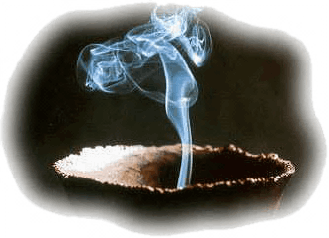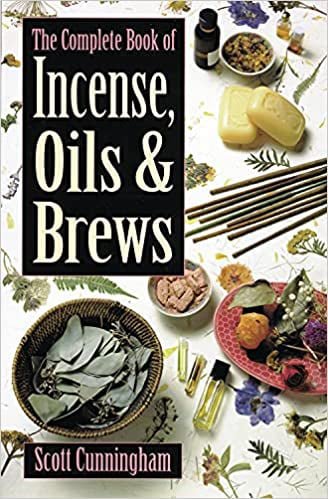Not all incense formulas included in this book are strictly for magical use. Some are smoldered in thanks or offering to various aspects of Deity, just as juniper was burned to Inanna 5,000 years ago in Sumer. Other blends are designed to enhance Wiccan rituals.
You needn't limit incense use to ritual, but avoid burning healing incense just for the smell, or to freshen up your stale house. Burning magically constructed and empowered incenses when they're not needed is a waste of energy. If you wish to burn a pleasant-smelling incense, compound a household mixture for this purpose.
The Materials
Incenses are composed of a variety of leaves, flowers, roots, barks, woods, resins, gums and oils. Semiprecious stones may also be added to incenses to lend their energies to the mixture, much as emeralds were once burned in fires by ancient Meso-American peoples.
Out of the literally hundreds of potential incense ingredients, perhaps 14 are most frequently used. Keep a stock of these herbs on hand if you plan to make several incenses. These might include:
* Frankincense
* Myrrh
* Benzoin
* Co pal
* Rose petals
* Bay
* Cinnamon
* Pine needles or resin (pitch)
* Juniper
* Sandalwood
* Cedar
* Thyme
* Basil
* Rosemary
Be aware that many plants (if not all!) smell quite different when being smoldered. Sweet scents turn sour fast.
If you wish, take a large number of dried and finely ground plant substances (flowers, leaves, bark, roots) and drop a small portion of each herb onto a hot charcoal block; then decide whether the scent is pleasing or not. You might make a notation of each botanical and its scent in a special notebook reserved for this purpose or on three-byfive-inch cards. Also note any psychic or other sensations you notice with each burning herb. In this way you'll eventually build up a thorough knowledge of incense materials, which will aid you in your herbal magic.
Do remember that, as surprising at it sounds, scent isn't a factor in magical incense, except very generally: sweet odors are usually used for positive magical goals, while foul scents are used for banishing rituals.
Scent is power. It allows us to slip into ritual consciousness, thereby allowing us to raise power, infuse it with the proper energies, and send it forth toward the magical goal. However, not all magical incenses smell sweet. Some have strong, resinous odors; others, intensely bitter scents. Incenses intended for ritual use are blended to provide the proper energies during magical operations-not to smell pleasing to the human nose.



